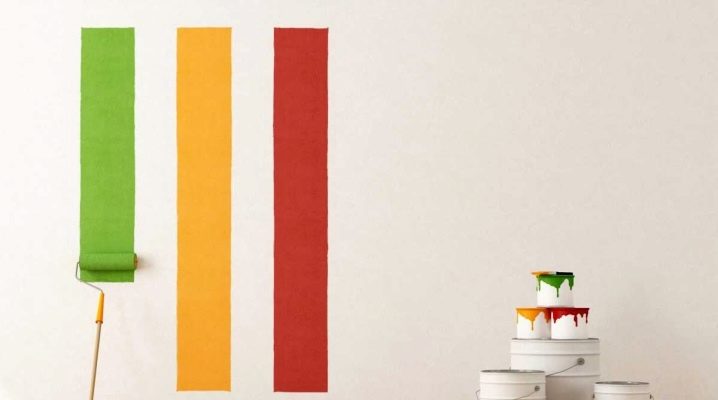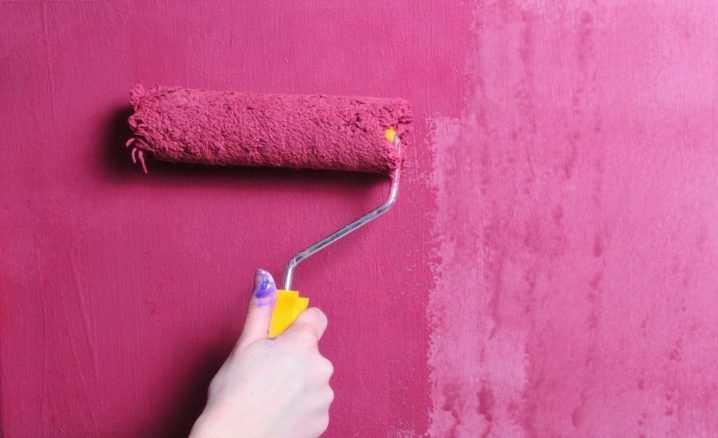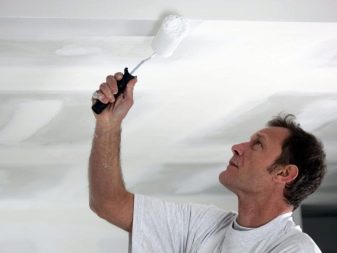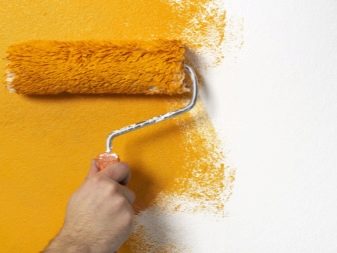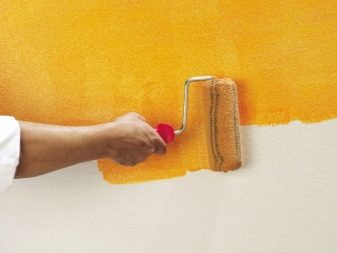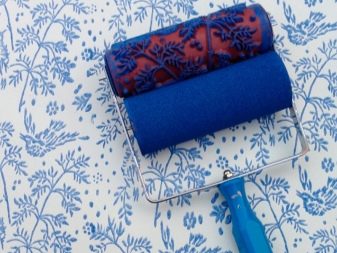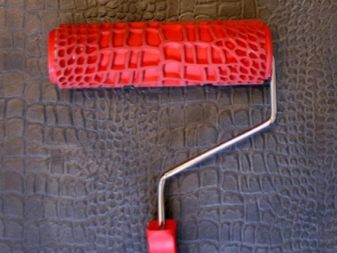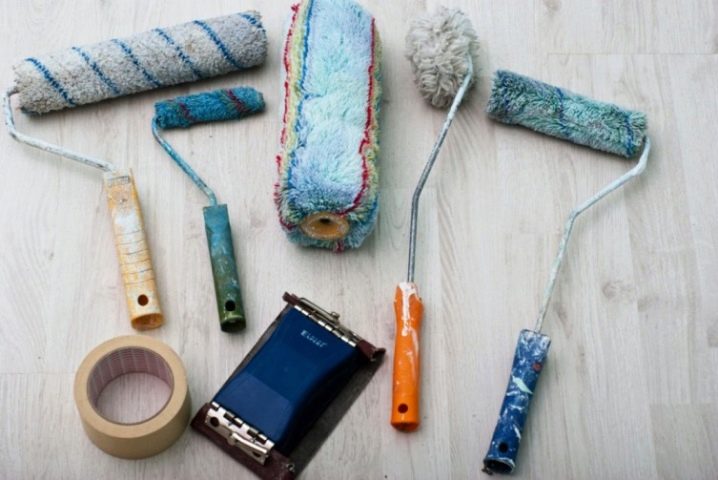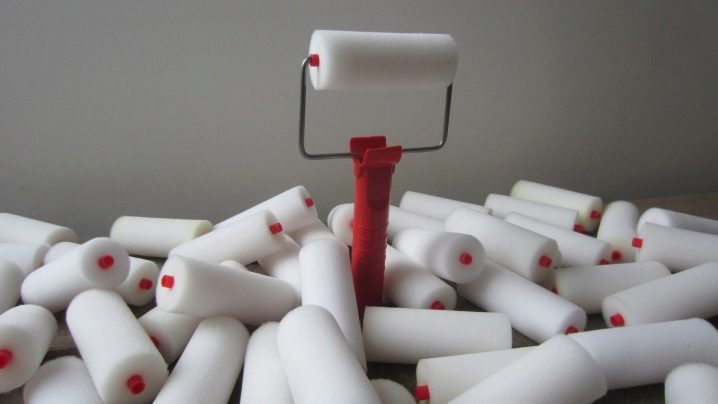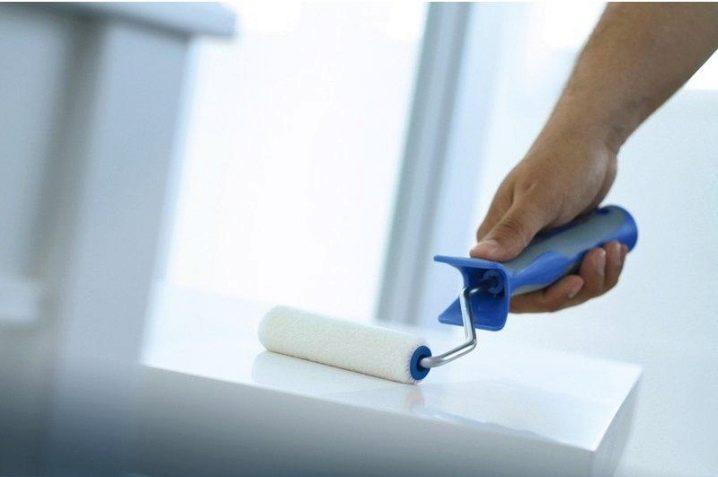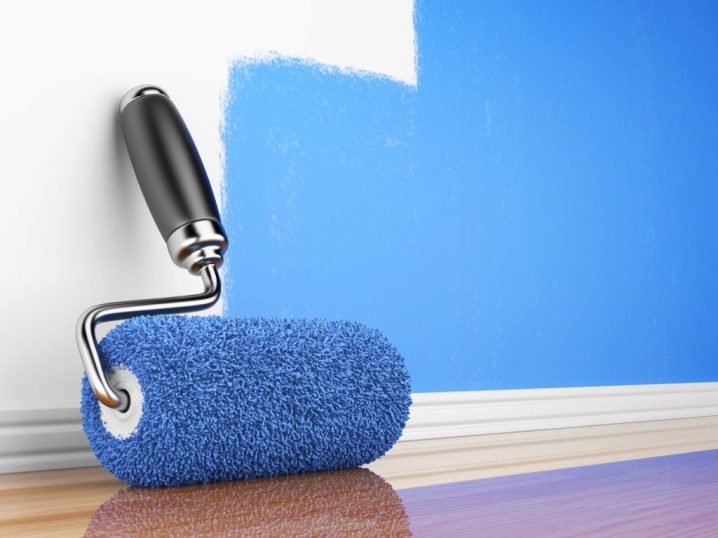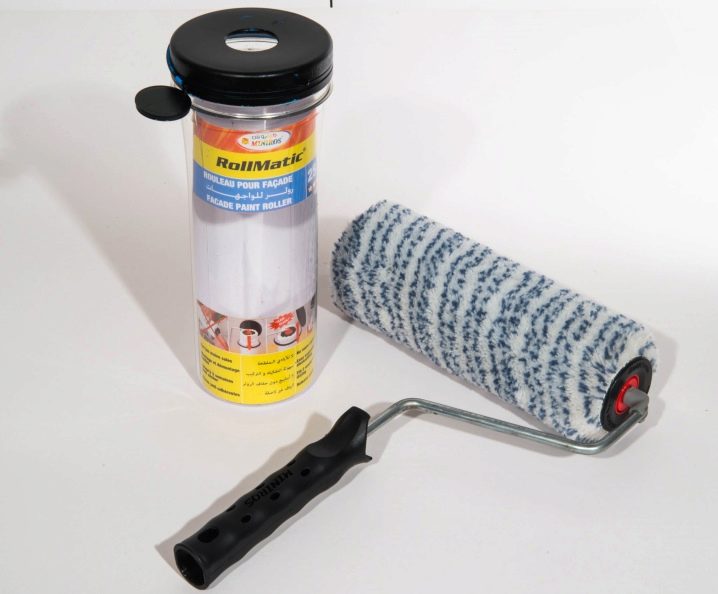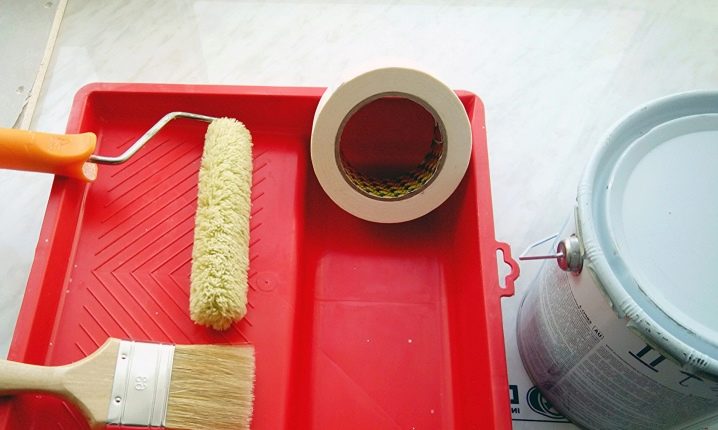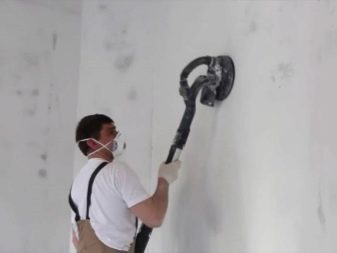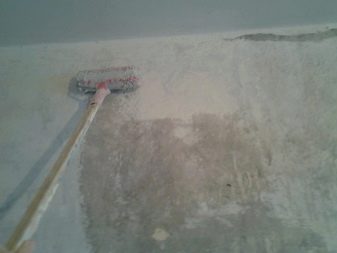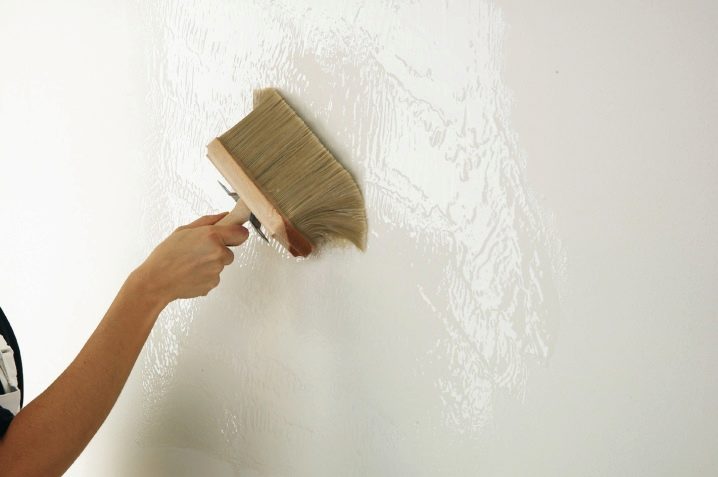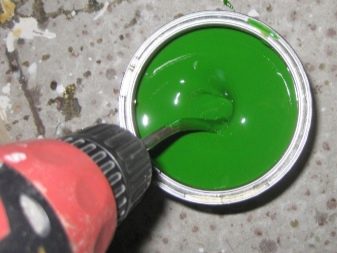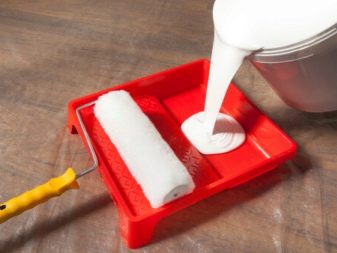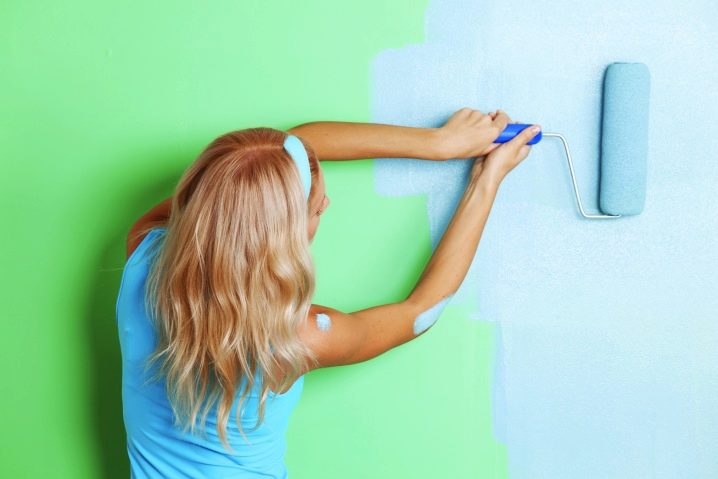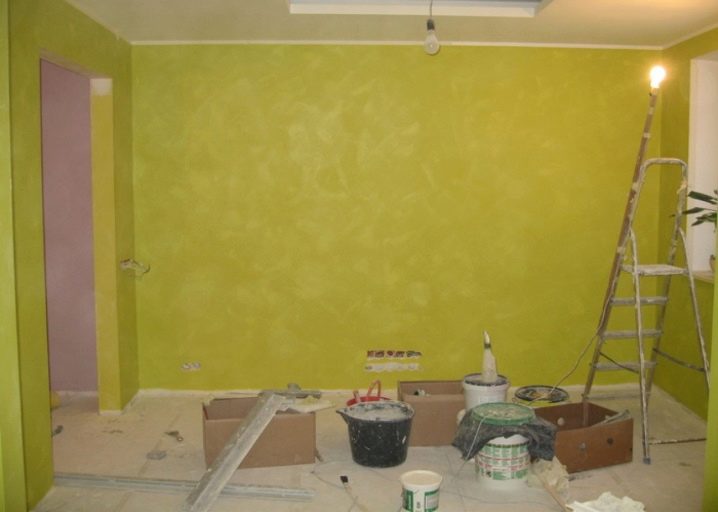How to paint walls with a roller?
Plaster and painting works accompany any kind of repair. The quality of painting the walls depends not only on the general appearance of the room, but also opens up new possibilities for the design. Therefore, this process must be treated responsibly. Traditionally, the coloring is carried out using a roller. This tool is considered universal, as it allows you to quickly perform finishing work on the walls of a large area. To properly paint the surface of the floors, it is enough to choose the appropriate type of roller and master the elementary technique of applying paint.
Painting features
Painting walls is a difficult type of finish, which requires special preparation of the room, a careful selection of materials and special tools.If painting is planned to be done by hand, it is necessary to have certain skills in order to evenly distribute the composition of paint over the entire surface of the walls. The application should be carried out in such a way that the final layer turned out without traces and stains.
Most artists recommend applying paint on the walls with a roller. They can also paint the ceiling.
As for the materials, the quality of the work will turn out to be acrylic or water-based paint.
Today there are two ways to paint the walls:
- Perform vertical hand movements from top to bottom.
- Perform bottom-up movements to the starting point.
- You can paint the surface horizontally with a roller.
Thanks to the first method, the base becomes smooth without stripes, while the second technique allows simultaneously covering the entire area of the wall that needs to be painted. In this case, both in the first and in the second case, the coloring is carried out in several layers.
Painting work can be started only when the surface of the walls is prepared and has an ideal structure without cracks and defects.It is worth noting that the roller is used for flat areas, to paint the ends and corners you need to choose a special brush. In addition, the textured roller can create unusual patterns and compositions on the walls. To do this, separately purchase the nozzles with a pattern. By clicking on the roller in the process of painting, the shades of paint will change and as a result you will get beautiful abstractions.
Species
The quality of wall decoration depends on various factors, the main one of which is considered to be the right choice of tool. Since huge areas are painted with a roller, you should pre-select its appropriate size and “coat”. If volumetric painting works are planned, then it is desirable to purchase large options with a width of at least 30 cm. Small tools are also available (the size of their attachment does not exceed 3 cm). They are ideal for painting hard-to-reach places: seams, seams and corners. Depending on what material the surface of the roller is made of, there are different types of tools.
Foam rubber
This roller is designed to work with water-dispersion mixtures and is not recommended for emulsion painting, as this solution in contact with foam rubber forms air bubbles on the surface of the walls.So, after finishing, small stains will remain on the base, and the painting will be spoiled.
Nozzle of foam rubber has a porous structure, so it absorbs a lot of solution and with vertical paint application you can not avoid stains.
Velor
Well suited for water-based and oil paints. Its short pile allows you to evenly distribute the solution, thus forming a flat and thin film. The nozzle of the tool saves paint and allows you to quickly perform work.
Fur
It is used for walls with a relief surface. This roller is made from both artificial and natural materials. The length of the pile on the "coat" may be different. The tool is universal, as it can be used in work with all types of paints.
Roller with polyamide thread
This product is easy to use and wears out slowly. To paint with such a roller, it is necessary to have a certain skill, since its threads can spray paint.
Painting procedure
As a rule, the walls are painted at the very end of the repair, therefore all the painting work must be carried out correctly and accurately.so as not to spoil the finish of the remaining surfaces. Since the floors have a large area, they are recommended to be painted with a roller. It will accelerate not only the entire workflow, but will allow you to get the perfect decor in the decoration. Painting consists of the following stages:
Training
It is necessary to stock up with all the tools. To do this, you must purchase a special trough for paint, colored mixtures and nozzles for the roller. Then the room itself is prepared: the furniture is taken out (it can also be moved and covered with film), the flooring, window openings and doors are covered.
Be sure to turn off the power supply, hide all appliances under the molar tape.
Grout
The surface of the walls is polished with emery paper, so that roughness and unevenness are removed. After the base is leveled, it is necessary to clean the walls from dirt and dust. To do this, use the cleaning solution and a soft sponge.
Primer
Around the perimeter of the area, several layers of primer are applied. It will well saturate the surface and provide further high-quality color.
Paint application
The mixture for work needs to be prepared in advance, and then thoroughly mixed with a drill with a mixer nozzle. The paint is poured into a special pan-trough and the roller is dipped into it. “Fur coat” should be well soaked, after which it is squeezed a little on the grooved surface of the bath, then make rolling movements as long as the solution does not soak evenly throughout the nozzle. Now it is possible to apply the mixture on the wall, making vertical or horizontal movements with a roller. When he stops painting, he is dipped into the pallet again and continues to work.
Technology works
An important point when painting walls with a roller is the observance of the rules for applying the mixture. The workflow starts from the top corner in the room - this ensures uniform filling and also helps to avoid stripes and spaces.
Professional masters recommend to pre-divide the area of the wall into separate sections. Thus, the working area is divided into squares, the number of which is determined by the size of the nozzle roller. That is, one square is equal to the width of the tool multiplied by 5.
Painting is performed from the top right or left corner of the square. To simplify the task, the work area is additionally distinguished into 5 vertical stripes, the first of which is passed, and then paint is applied to the second.In the same way, the third strip is passed through, holding the fourth on a roller. At the very end, they color the extreme line and the fifth lane, go to painting the fourth, first and third runs.
As for the second layer of paint, they cover the surface of the square in the reverse order: they start from the third mark and smoothly pass to the first, fourth and fifth, ending with the second stripe.
For many, such a procedure may seem difficult and impossible. In fact, it is not. If you have patience and evenly distribute the coloring solution around the perimeter of the square, the result will be spectacular. It is worth noting that the movement of the roller is best done from the bottom up. This should be done quickly. When the first of the conditional squares painted, you can proceed to another.
During painting work it is important to ensure that there are no gaps on the surface of the walls. Having completed the finishing of the vertical stripes, the coloring of the next upper square proceeds in the same way.
Finishing work
When the most complex and laborious process is completed, you need to clean the roller, clean the room and dry the walls. It usually takes a few days.The drying process depends on the temperature in the room, as well as on the humidity of the air. To speed it up, you can open the vents and windows, but in winter it can not be done. When the room no longer smells of paint, and the surface of the walls becomes dry, you will need to complete the repair, as well as to produce the room in its original appearance.
We should not forget about cleaning up the working inventory. All painting supplies need to be washed immediately after painting, as their surface dries quickly and will be unsuitable for regular finishing.
Water-soluble dyes are washed off with ordinary water, and for oil enamels you will need acetone or gasoline.
General recommendations
Today, everyone can paint the walls with a roller. In order for the result to be spectacular at the end of the painting work, it is important to comply with all paint application technologies, to choose the right material and tools.
It is necessary to adhere to the following recommendations:
- Before painting, accurate wall area calculations should be made. From this will depend on the amount of paint.
- When purchasing a mixture, it is important to pay attention to its color, which can change shade after drying.
- The surface of the walls must be prepared. It is trimmed from the previous coating, irregularities and fat. Primed for better adhesion of paint
- The subsequent layer is applied only after complete drying of the first.
- All work must be carried out in special protective clothing.
The following video shows how to paint a wall correctly.
